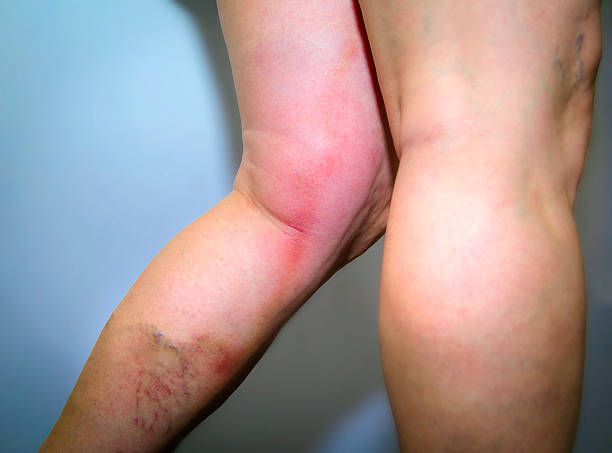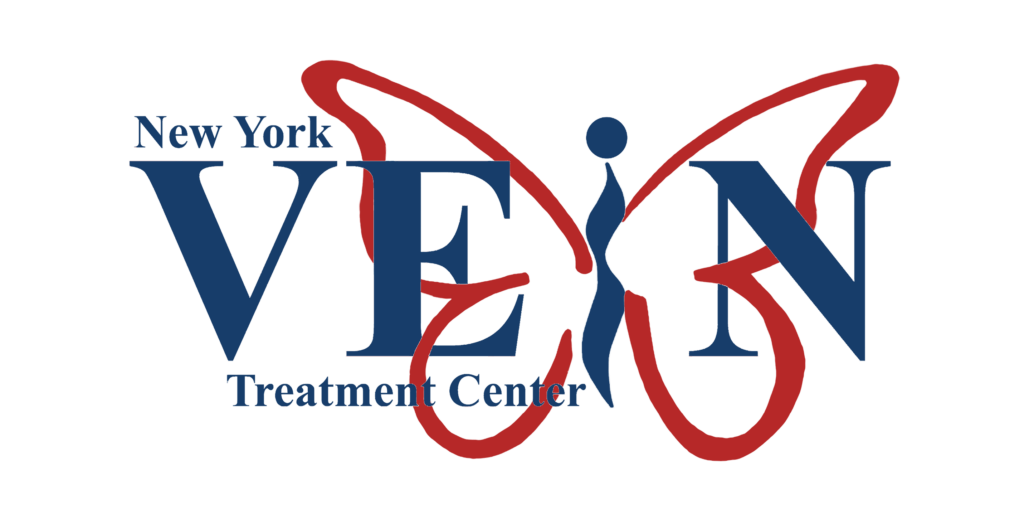Blood clots can form in your legs for several reasons. The great news is that you can take measures to keep them from forming.
At the New York Vein Treatment Center, we specialize in venous care, including clotting issues. If you feel blood clot symptoms in your legs, give us a call.
Here are what causes blood clots in your legs and how to avoid them.
What are blood clots?
A blood clot is called a thrombus. Clots happen when blood platelets, proteins, and cells bind together.
Normally, blood clots and clotting are a good thing. For example, a blood clot forms to stop the bleeding when you have a cut. Then, as you heal, the clot dissolves away.
Unfortunately, blood clots can form outside their necessary functions, causing various health issues.
What are the different kinds of leg blood clots?
There are 2 different kinds of leg blood clots.
Superficial Venous Thrombosis (SVT)
Superficial venous thrombosis (SVT) occurs in the superficial veins under the skin. They typically occur in the legs or arms. Sometimes, an SVT can grow into a deep vein thrombosis (DVT).
Deep Vein Thrombosis (DVT)
Deep vein thrombosis (DVT) occurs in the deep veins. These clots usually form in the legs but can also develop in the arms and other body parts. DVTs are more dangerous because if they dislodge, they can travel to the lungs causing pulmonary embolisms (PEs).
What are the symptoms of blood clots in the legs?
Not everyone experiences symptoms associated with blood clots in the legs. If symptoms manifest, they might include the following:
- Pain and tenderness
- Leg swelling
- Redness and warmth
- Fatigue
- Heaviness in the leg
Since these symptoms are similar to other medical conditions, it’s crucial to be seen and diagnosed by a medical professional.
What causes blood clots in the legs?
While blood stagnation is one cause of blood clot formation, other factors increase the risk of forming blood clots:
- Family history of blood clots
- Personal history of blood clots
- Blood clotting disorders
- Being overweight or obese
- Being over 60
- Being sedentary for long periods
- Pregnancy
- Paralysis
There are also medical conditions and medications that put you at a higher risk of developing blood clots in the legs:
- Varicose veins
- Heart issues (heart failure or heart attack)
- Inflammatory bowel disease
- Lupus
- Cancer
- Certain cancer treatments
- Birth control pills
- Hormone replacement therapy
How do I avoid getting blood clots in my legs?
While genetics and medical conditions may make you more prone to develop blood clots, there are measures you can take to help avoid them.
Stay Hydrated
Drinking plenty of water keeps your blood from thickening. Thick blood has a better chance of forming clots. Also, avoid drinking excessive amounts of alcohol, which tends to dehydrate your body.
Keep Moving
Sitting or lying down for prolonged periods slows or stagnates blood flow, making it easier to form blood clots.
Stretch Your Legs Every Hour
Whether on a long plane ride or taking an extensive road trip, it’s crucial to stretch your legs every hour. If you’re on a plane, stand up and walk up and down the aisle for a little bit. When on the road, take rest stops every hour to get out of your vehicle and take a little walk.
Move Your Toes, Feet, and Ankles When You Can’t Stand
Even when you can’t stand up and walk, you can still try wiggling your toes or pointing and flexing your feet to get the blood flowing. Try bending and straightening your knees a few times if you can.
Establish a Workout Routine
Exercising has numerous benefits, including combating blood clot formation. Creating and sticking to a daily exercise routine will benefit your entire body’s well-being.
Wear Compression Stockings
For added blood flow support, try wearing compression stockings. Compression stockings keep your legs from swelling when sitting or standing for long periods. They also keep the blood from pooling in your legs.
Can blood clots in my legs be dangerous?
Blood clots can be a sign of other lingering health issues, and it’s always a good idea to see a doctor if you think you have blood clots.
One of the biggest dangers of leg blood clots is DVT formation. If a DVT clot dislodges, it can travel to the lungs, blocking blood flow. When this happens, it’s called a pulmonary embolism (PE) which is dangerous and can be fatal.
Symptoms of PE include the following:
- Chest pain
- Trouble breathing
- Coughing (including coughing up blood)
- Rapid heartbeat
- Sweating
- Fainting
If you’re experiencing any of these symptoms, seek immediate emergency medical care.
Who do I see if I have blood clot symptoms in my legs?
At New York Vein Treatment Center, we’ve been successfully diagnosing and treating leg blood clots since 2007. Through advancing technologies and expertise, we’ll ensure you’ll receive the personalized care you need to get back on your feet again.
Contact us today if you’re experiencing blood clot symptoms in your legs!

Dr. Lev Mark Khitin, a leading cardiovascular and thoracic surgeon, is the founder of the New York Vein Treatment Center. With almost 20 years of experience and over 20,000 successful vein procedures, he is a renowned expert in the diagnosis and treatment of venous disease. Dr. Khitin’s patient-centered approach and advanced surgical skills have consistently delivered excellent results, making him a prominent figure in the field.


